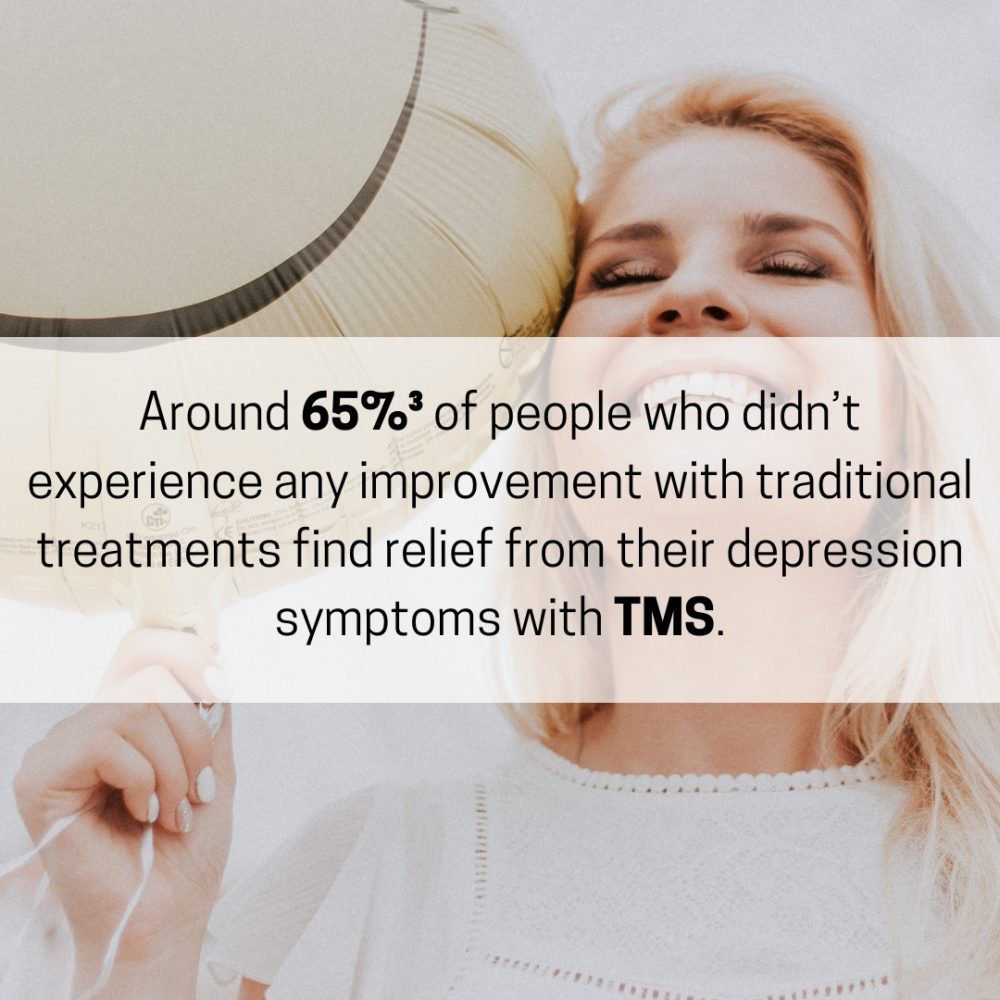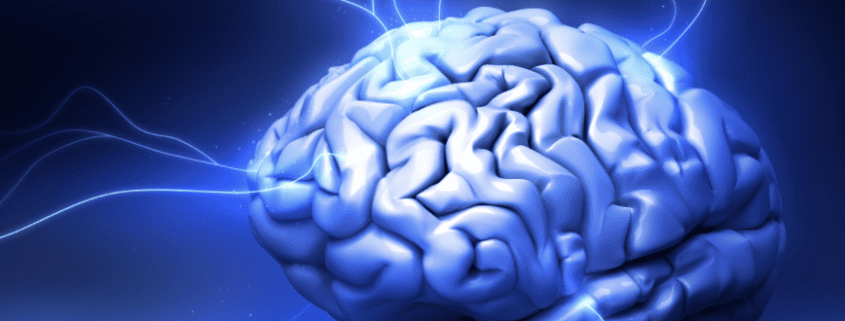Getting magnetic coils or wires attached to your head to stimulate your brain: this probably isn’t the first thing you picture when you think about treatment for depression. But this is exactly how brain stimulation therapies, including transcranial magnetic stimulation (TMS) and electroconvulsive therapy (ECT), work. When considering brain stimulation therapy, it’s important to recognize that not all methods are alike, and there are significant pros and cons to take into account while weighing TMS vs ECT.
ECT is older and still more widely known than TMS, so if you’re just now learning about TMS therapy for depression, you may be wondering, is TMS electroshock therapy? The answer, in short, is no. Like ECT, TMS is a brain stimulation therapy, but it’s considered to be much safer than electroconvulsive therapy. Here’s everything you need to know about the difference between TMS and ECT.
Similarities & Differences Between TMS vs ECT
Both TMS and ECT are brain stimulation therapies¹. This umbrella term includes any type of treatment that uses electrodes,electric currents, or magnets to directly activate certain areas of the brain. Other types of brain stimulation therapies include magnetic seizure therapy and deep brain stimulation. TMS and ECT are also both used to treat depression.
The similarities between TMS vs ECT end there, however. Although TMS and ECT both help patients with depression by stimulating the brain, the ways in which they do so are vastly different. In general, TMS is much less invasive and risky than ECT, and can be used by a wider range of people.
What is electro-convulsive therapy (ECT)?
Developed in the 1940s, ECT is the type of brain stimulation therapy that’s been studied and applied the longest. It works by delivering direct electric currents to the brain (through electrodes placed on the scalp), which cause seizures. These seizures are intended to change the way the brain functions and, in a way, “reset” it. Although most people imagine “shock therapy” scenes from horror movies when they think about ECT, this treatment isn’t as scary as it sounds, especially in its modern form.
At the same time, ECT is almost never a first-line treatment for anybody. It’s usually used as a last resort for people who suffer from severe, treatment-resistant depression. In other words, ECT is where patients and care providers turn when nothing else has worked, and when depression is causing a high risk of suicide or other serious immediate harm.. Sometimes, ECT is also used for other mental health conditions like bipolar disorder or schizophrenia.
To receive ECT, you need to go under full anesthesia and take a muscle relaxant. This is to ensure that you don’t feel any pain while your head is receiving electric shocks, or injure yourself during the seizures. You can receive ECT on an outpatient basis, but you shouldn’t drive yourself home due to the effects of the anesthesia. Because ECT is so invasive, many people have to make accommodations in their daily lives to receive this treatment, such as taking time off work.
The primary benefit of ECT (vs. traditional first-line depression treatments like medication or psychotherapy) is that it’s very effective, and it usually works quickly. Some people start to see improvement in their symptoms within a week. Up to 80% of people² with severe depression get better with ECT.

What is transcranial magnetic stimulation (TMS)?
TMS is a much gentler form of brain stimulation therapy than ECT. TMS uses electromagnetic coils (the same technology that is used in MRI scans) on your scalp to deliver micropulses to your brain.
You don’t need to go under anaesthesia to receive TMS. The electromagnetic micropulses do not induce seizures or pain, and sessions only last between 20 and 50 minutes. That means that you can return to the rest of your life as soon as you’re done with each appointment.
Like ECT, TMS is used to help people with treatment-resistant depression. It’s also been FDA-approved to treat obsessive-compulsive disorder and certain types of migraine headaches. There’s also evidence that TMS may be helpful in other disorders, like bipolar disorder and post-traumatic stress disorder. Although it’s also not considered a first-line treatment, people are much more willing to try TMS therapy because it comes with far fewer risks than ECT.
The benefits of TMS (vs. traditional first-line treatments) are that it works quickly. Around 65%³ of people who didn’t experience any improvement with traditional treatments find relief from their depression symptoms with TMS.
Is TMS Safer than ECT?
One of the main reasons why people choose TMS vs ECT is because TMS is much safer and better tolerated than ECT.
ECT intentionally causes seizures, which are essential to the way the treatment is believed to work. Obviously, this comes with risks. Prolonged seizures are a rare, but serious side effect that can come with ECT. ECT has also been linked to short-term memory loss, learning difficulties, and in a few cases, long-term memory problems. Going under anesthesia also comes with inherent risks.
TMS doesn’t cause seizures, and the risk of developing seizures after receiving TMS is less than 1%⁴. TMS has been found to be safe and well-tolerated by most people, and side effects are usually mild and temporary. Some of the most common side effects of TMS include fatigue and pain or discomfort on the scalp where the coils were placed. You also don’t need to go under anesthesia when you receive TMS, which means those risks are eliminated.
This is the main difference between TMS and ECT. Yes, ECT is effective. But if you aren’t willing to take on the risks and side effects that come with ECT, then TMS may be an effective and safe option for you.
Is TMS as Effective as ECT?
You might be wondering: why would anyone choose ECT over TMS if it comes with so many side effects? The answer, usually, is because ECT has been found to be slightly more effective than TMS. Around 80% of people feel their depression symptoms get better after ECT, compared with 65% for TMS.
It’s just a matter of what’s right for you, and how much risk you’re willing to take on. People choose TMS over ECT despite the effectiveness of ECT because:
- There are fewer side effects with TMS
- TMS doesn’t cause seizures
- TMS doesn’t carry the risk of memory loss
- TMS doesn’t require anesthesia, which lessens your medical risk
- TMS can be done on an outpatient basis, while ECT is often started inpatient
- TMS is sometimes approved as a first line treatment for depression, while ECT almost never is
- ECT is often more expensive than TMS
- You can drive yourself to and from TMS sessions, unlike ECT sessions
Both TMS and ECT have their benefits and drawbacks. Both are effective treatments for depression, and only you and your treatment provider can decide which option is best for you.
TMS vs ECT: What’s Your Choice?
At the end of the day, whether ECT or TMS is “better” is a personal decision that greatly depends on your individual circumstances. ECT may be slightly more effective than TMS. However, it also comes with many more risks than TMS, including memory loss, prolonged seizures, and learning problems.
TMS is an effective, quick, and safe intervention for treatment-resistant depression. People often choose TMS over ECT because TMS isn’t disruptive to their everyday lives. If you’re interested in receiving TMS, contact us today. We are the longest-established TMS clinic in Colorado, and our providers can help you get your life back from depression.
References:






